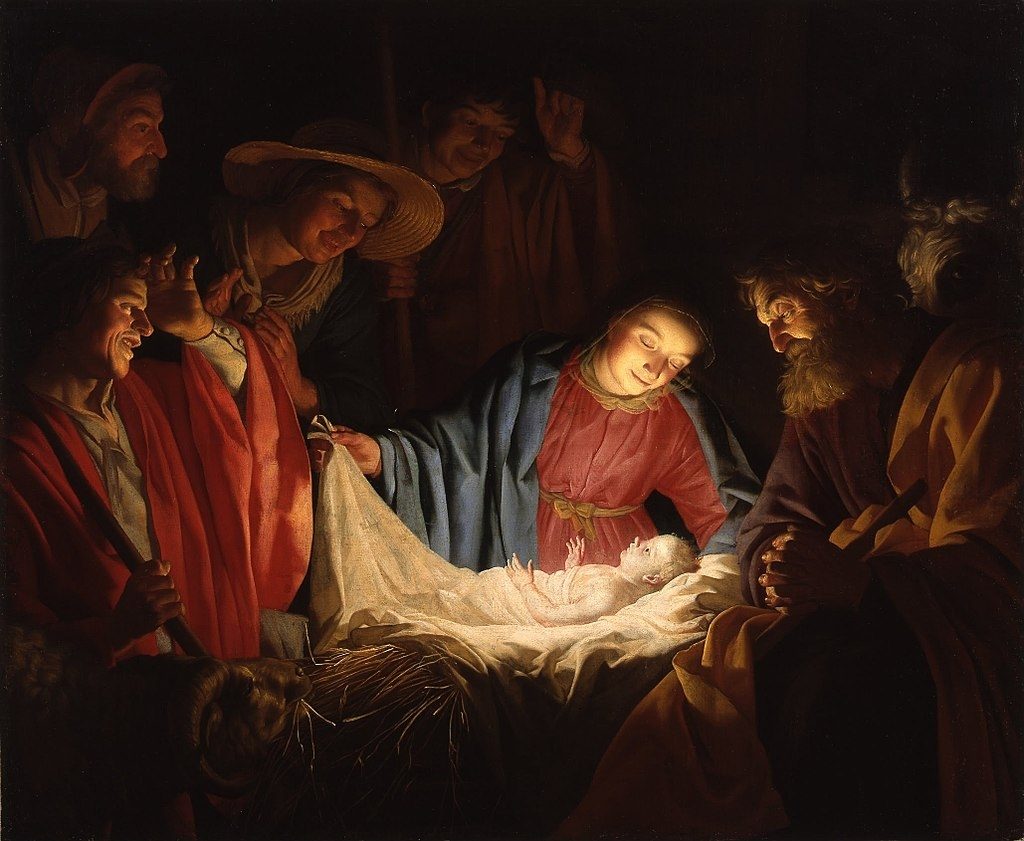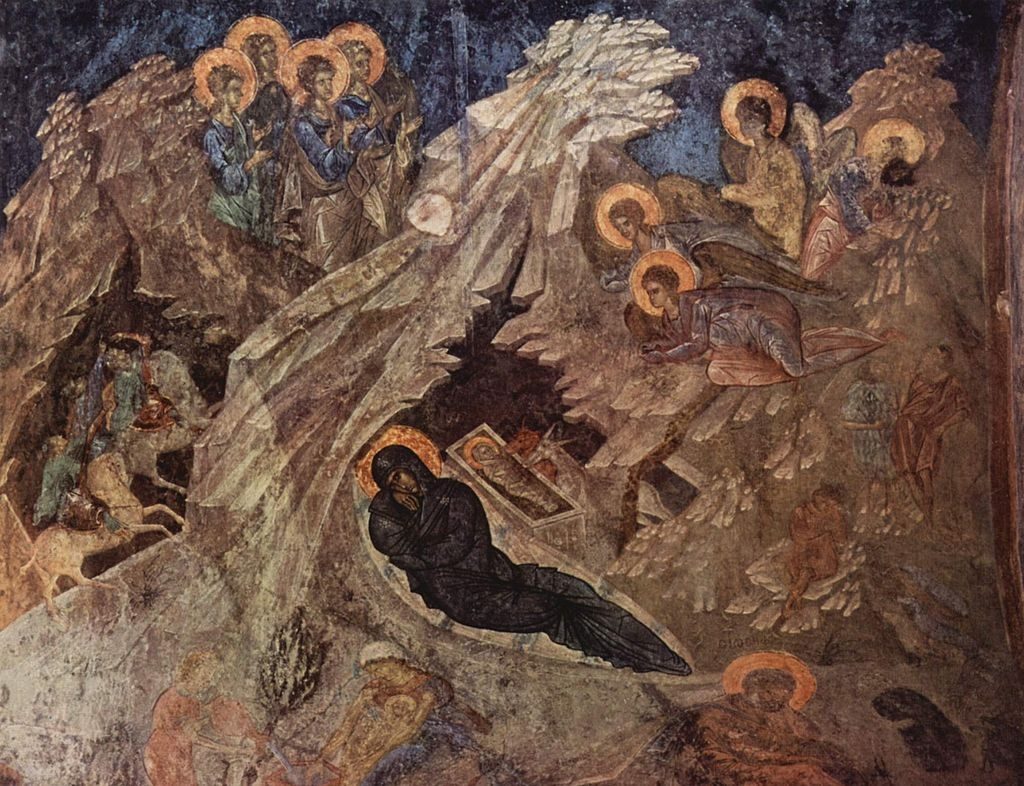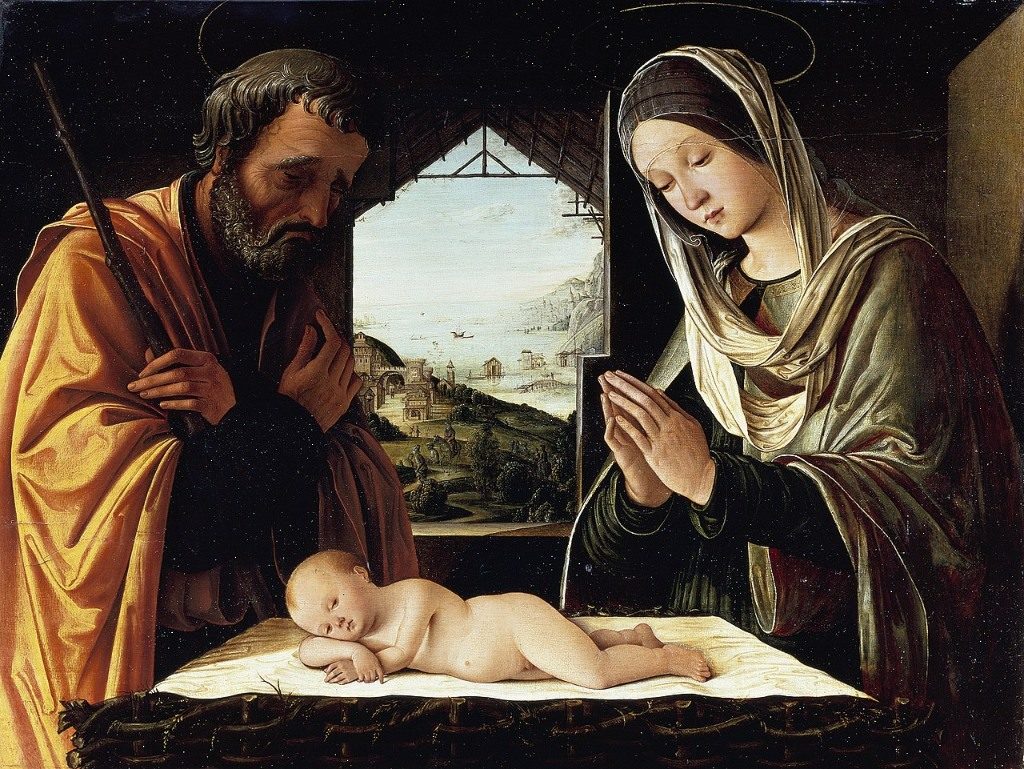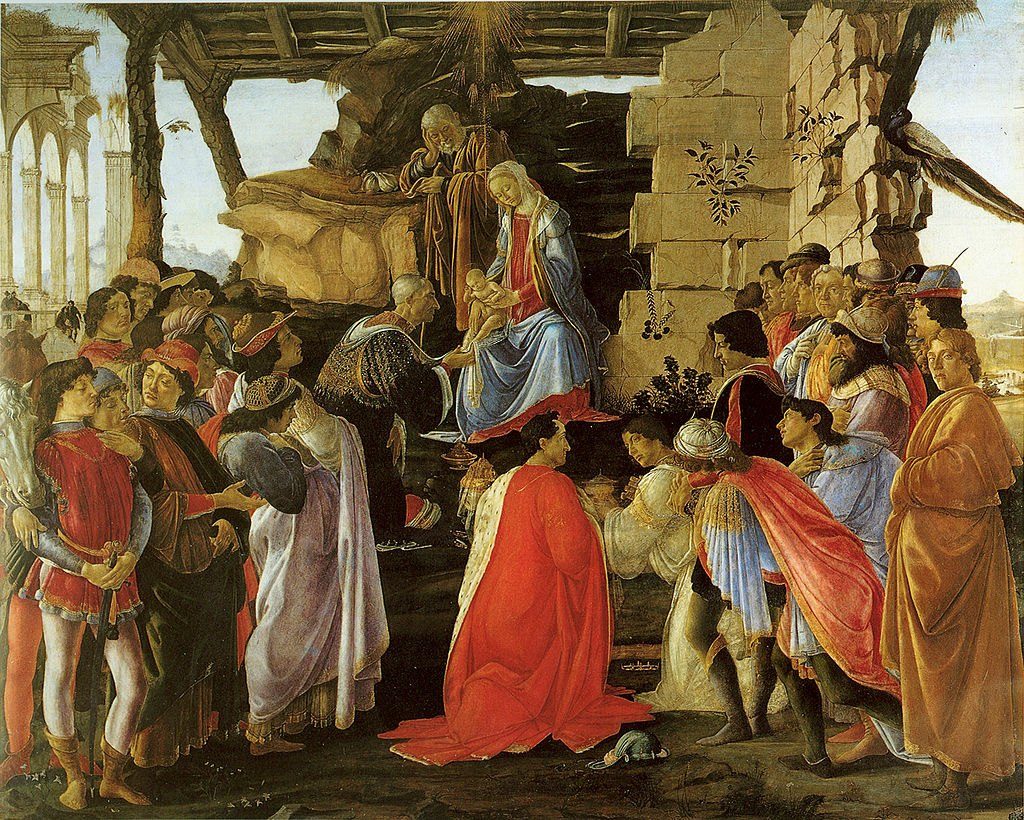Though artistic styles have dramatically changed over the centuries, the canonical biblical account of the Birth of Jesus that is depicted in art has not changed much at all.
The Nativity of Jesus, the basis of the Christian holiday of Christmas, is one of the most important and enduring subjects in the art of the Christian world. Based on the narratives in The Bible, particularly The Gospels of Matthew and Luke, artists throughout the centuries have depicted the birth of The Christ Child in significantly different styles.

The Nativity was first represented in the 4th Century as carvings on Early Christian Roman sarcophagi; these carvings on stone featured Mary and The Child in a manger along with one or two shepherds, the Magi (or Wise Men from The East), and two barn animals, the ox and ass. These animals were always present, even when Mary and other humans were not. They had a higher significance in this scene; the ox represented the Jewish people weighed down by the Law while the ass represented the pagans carrying the sin of idolatry. The arrival of Christ was meant to free them of these burdens.

By the 6th century, a new image of the Nativity started to form in Byzantine Syria. The setting of the Holy Birth is now a cave and Mary is seen lying beside the infant. The cave in these works is always dark, representing the world being thrown into darkness, but saved by light, i.e., the birth of Jesus. The ox and ass are still present, as are the Magi, always on the left, and the shepherds, always on the right. If there is room in the mural, angels are included; often one is telling the shepherds of the Good News of Christ’s birth. In some depictions, a circular disc is painted at the top of the scene with a band coming straight down from it. This is taken to be The Star of Bethlehem, which appears in the Nativity story of The Gospel of Matthew (Matthew 2:1-12). This new representation of the Nativity was depicted in many frescos, mosaics, and icons, and set the essential form for how the birth of Christ would be portrayed from The Middle Ages until the Modern Age.

A sharp change in the iconography of the Nativity occurred in the 15th century—Joseph and Mary now kneel before the Christ Child who lies naked on the ground before them. This came to be known as the “The Adoration of The Christ” (or “Adoration of The Child”), a depiction that continues to dominate Nativity scenes until the present day. This new style of depicting The Holy Family was influenced by St. Bridget of Sweden (1303-1373), a popular mystic who wrote about her visions of The Nativity in a memoir. “After the birth, I saw that glorious infant lying on the earth, naked and glowing,” she wrote in her account. “…when therefore the Virgin felt she had now given birth, at once, having bowed her head and joined her hands, with great dignity and reverence, she adored the boy…the old man (Joseph) entered; and prostrating on the earth, he adored him on bended knee and wept for joy.”

During the Renaissance, the period in European civilization immediately following the Middle Ages and a time that saw the revival of classical learning and wisdom, artistic originality replaced religious iconography in depictions of the Nativity. Some of the elements that appeared in previous representations, such as the animals, were often omitted (in fact, depictions of the ox and ass were outlawed by The Council of Trent for being ignoble). Plain Nativity scenes with just The Holy Family became scarce. Because Renaissance artists were painting on very large surfaces, they were able to add many more figures. They also utilized poses and actions that were very different from those depicted in older works. Creative liberties were taken with the setting (replacing the stable with Classical ruins, for instance), clothing, and in some cases, the narrative. Notable masters who contributed to the rich tradition of producing an important work on the subject include Botticelli, della Francesca, Da Vinci, Raphael, and Michelangelo. Their exquisite works featured rich coloration, intricate details, and other expressions of artistic advancement.

After the Renaissance, there was a decline in the importance of religious art. Nativity paintings became even less common after the 18th century with only a few key artists producing canvasses or illustrations on the subject matter.

Today, we still enjoy the beauty and solemnity of the Nativity in commonplace objects such as greeting cards, advent calendars, and belens (or creches). Artistic styles depicting this iconic scene may have changed over the centuries, but the narrative elements such as The Holy Family, the Magi, shepherds, and livestock have remained the same.

READ RELATED Sparkle and Shine: Fabulous Ornaments from the World’s Top Luxury Brands





